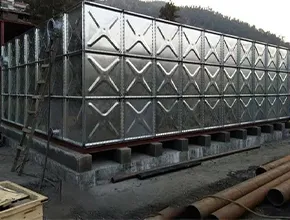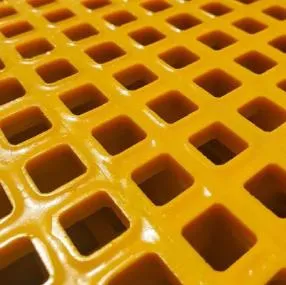loading...
- No. 9, Xingyuan South Street, Dongwaihuan Road, Zaoqiang County, Hengshui, Hebei, China
- admin@zjcomposites.com
- +86 15097380338
- Welcome to visit our website!
Янв . 14, 2025 10:01
Back to list
fibreglass floor grating
Fibreglass floor grating has revolutionized the flooring landscape, especially in industrial and commercial environments. Thanks to its distinctive attributes, fiberglass grating has emerged as a preferable alternative to traditional metal or wooden options, offering unparalleled benefits that enhance operational efficiency and durability.
Experts in architectural and industrial design increasingly advocate for the use of fibreglass grating owing to its versatility in aesthetics. Available in a variety of colors, patterns, and finishes, it can be customized to align with the architectural vision or branding requirements of an organization, improving both functionality and appearance. This flexibility makes it a suitable option not only for industrial spaces but also for public areas, leisure facilities, and commercial establishments aiming to marry practicality with aesthetics. The authority of fibreglass floor grating manufacturers and suppliers further boosts the credibility and trustworthiness of this material choice. Established industry leaders ensure that their products are compliant with international quality standards, such as ISO certifications. Partnering with reputable suppliers guarantees that clients receive high-grade, tested and verified products that meet specific industry demands. Moreover, comprehensive warranties and after-sales support services offered by these manufacturers reinforce customer confidence and satisfaction. On the sustainability front, fibreglass floor grating supports eco-friendly initiatives. Its production requires less energy compared to steel alternatives, and its longevity means a reduced environmental impact due to fewer replacements. Environmentally conscious companies can benefit significantly from choosing fibreglass, aligning with sustainability goals and reducing their carbon footprint. In conclusion, choosing fibreglass floor grating for your facility brings numerous advantages, from outstanding resilience and safety to aesthetic versatility and environmental benefits. As industries continue to evolve and prioritize better performance and safety standards, fibreglass grating is set to remain a cornerstone for those seeking reliable, cost-effective, and sustainable flooring solutions. With informed decision-making guided by experts and supported by leading manufacturers, the transition to fibreglass grating can significantly enhance both operational efficiency and strategic industry positioning.


Experts in architectural and industrial design increasingly advocate for the use of fibreglass grating owing to its versatility in aesthetics. Available in a variety of colors, patterns, and finishes, it can be customized to align with the architectural vision or branding requirements of an organization, improving both functionality and appearance. This flexibility makes it a suitable option not only for industrial spaces but also for public areas, leisure facilities, and commercial establishments aiming to marry practicality with aesthetics. The authority of fibreglass floor grating manufacturers and suppliers further boosts the credibility and trustworthiness of this material choice. Established industry leaders ensure that their products are compliant with international quality standards, such as ISO certifications. Partnering with reputable suppliers guarantees that clients receive high-grade, tested and verified products that meet specific industry demands. Moreover, comprehensive warranties and after-sales support services offered by these manufacturers reinforce customer confidence and satisfaction. On the sustainability front, fibreglass floor grating supports eco-friendly initiatives. Its production requires less energy compared to steel alternatives, and its longevity means a reduced environmental impact due to fewer replacements. Environmentally conscious companies can benefit significantly from choosing fibreglass, aligning with sustainability goals and reducing their carbon footprint. In conclusion, choosing fibreglass floor grating for your facility brings numerous advantages, from outstanding resilience and safety to aesthetic versatility and environmental benefits. As industries continue to evolve and prioritize better performance and safety standards, fibreglass grating is set to remain a cornerstone for those seeking reliable, cost-effective, and sustainable flooring solutions. With informed decision-making guided by experts and supported by leading manufacturers, the transition to fibreglass grating can significantly enhance both operational efficiency and strategic industry positioning.
Share
Next:
Latest news
-
The Rise of FRP Profiles: Strong, Lightweight, and Built to LastNewsJul.14,2025
-
SMC Panel Tanks: A Modern Water Storage Solution for All EnvironmentsNewsJul.14,2025
-
GRP Grating: A Modern Solution for Safe and Durable Access SystemsNewsJul.14,2025
-
Galvanized Steel Water Tanks: Durable, Reliable, and Ready for UseNewsJul.14,2025
-
FRP Mini Mesh Grating: The Safer, Smarter Flooring SolutionNewsJul.14,2025
-
Exploring FRP Vessels: Durable Solutions for Modern Fluid HandlingNewsJul.14,2025
-
GRP Structures: The Future of Lightweight, High-Performance EngineeringNewsJun.20,2025
